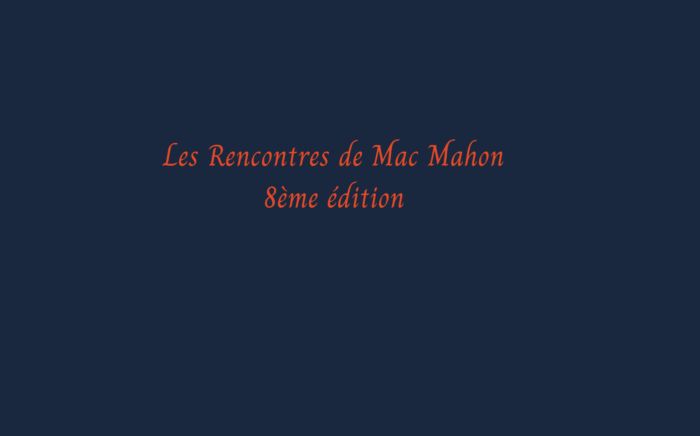Interview with Benoît Andrade, Managing Partner of Arrowman Executive Search
Interview by Olivier Durand

Connected objects are being deployed in every sector. Not only in the world of manufacturing, but also in FMCG. Figures attest to this, according to Gartner’s survey, there were 20 billion connected objects in 2017, and there will be 75 billion in 2025. But lets start from the beginning, what really is Internet of Things?
Its the universe of interconnected physical objects that generate artificial intelligence. They have the ability to autonomously take initiatives without human intervention. They communicate with each other and facilitate decision making by transmitting real-time information.
Where do we find Internet of Things?
In various kinds of applications. In automation systems, connected objects are in all communicating household appliances, smoke or presence detectors and sensors. For example, a connected detector is able to inform a supervision center that the battery is on the verge of running out. Sending messages and alerting, is subject to the world of IoT. This system makes products configurable, customizable, and places them at the heart of solutions with supervision, maintenance, improvement axes. We are entering a service era that is creating economic value.
In the world of industry, aeronautical manufacturers design and construct civil airplane motors covered with sensors, that continuously and in real-time during the flight, transmit information to both the technical services of the companies, and to the vendors. Because the algorithms have predefined standardized operating parameters for each phase of the flight, a relayed information that is outside of the predefined frame, can indicate a potential defect that can generate a preventative action of maintenance, a judicious intervention that is not systematic.
Is the sector of economy concerned by IoT?
Today, Id say that the sector of Manufacturing is mainly benefiting from it, in particular, the Factory 4.0. Its an ecosystem that involves hardware, software, telecommunications and data bases. Production chains that are entirely automated and connected, communicate between each other. It is this communication that constitutes the heart of the Factory 4.0. The whole chain of production operates without human intervention, from the introduction of raw material, to the packaging and storage of the product.
What human challenges are companies faced with when they launch towards IoT?
Because projects are complex, IoT involves all of the service lines in the company, the production, the maintenance, the logistics, the sales department , everyone must communicate with everyone. The structuring projects impose open collaboration as well as information sharing and diffusion. They put into question the original organization of the company that is forced to evolve towards a transversal structure with less hierarchy.
According to the International Data Corporation, the volume of data generated by connected objects, doubles every 2 years, and it will surpass 40.000 billion gigabytes in 2020, in the world. Millions of pieces of information are collected and stored, but for what purpose?
Big Data disrupts the running of companies and their business processes with the huge quantities of data that it generates, the speed of their renewal in a universe that is more and more connected by the multiplicity of supported formats: digital, text, sound an image. There is a double stake, it lies in the quality of the storage of data and its safeguarding, as well as the study and analyses that we can draw from it.
Internal use of Big Data
It highlights the performance of each person and the consolidation of the information helps to identify, more precisely, the weaknesses in the chain of production.
External use of Big Data
It helps to anticipate the expectations of clients or fix the right price on a new product. But, I want to point out that Big Data creates little or no intelligence by itself, it only produces raw information. Its up to the company to structure the information in accordance with its views provided that they have the human skills needed to do so.
So, on what specific functions can we count on to develop IoT projects and draw value from its collected data?
In order to draw benefit from the collected data of IoT, the company must recruit three types of profiles, a Project Manager, a Data Scientist and a Data Manager.
The Project Manager, must pilot it entirely and bring a global vision to ensure a consistent platform and system. He must have the charisma and the ability to ensure that everyone is working in the same direction. His competences in telecom and data, place him in the position to be the guarantor for the respect of the objectives.
The Data Scientist uses the computing power of data and models the algorithms to meet concrete needs. It is a complex position that requires solid scientific baggage and the mastery of data analyses methods. He must also grasp the functions of the company in order to provide effective solutions. Moreover, the current trend in this position is to specialize in a specific field. Its a position that is particularly sought after and the scarcity of skills in this field often hinders the development of projects.
As for the Data Manager, he ensures the operationality and the availability of the data, but not only. His role is to structure and to analyze the data, in order to bring out finer information and to facilitate decision making. The Data Manager must also dialogue with all of the services within the company.
One last question, does Big Data affect your head hunting profession?
Big Data plays an important role in recruitment by reducing the time spent sourcing (identifying profiles) and reinforcing its reliability. But it doesnt go further than that; not for the moment at least. The time saved searching for candidates, will give the consultants more time to focus on essential matters, such as the meetings and interviews. Understanding the needs of our clients and grasping the personality and professional motivations of the candidates, are things that a computer does not yet know how to do. A challenge that a recruiter, such as myself, is faced with, is to be able to determine how a candidate will perform and behave, once hired. The use of the serious game will be, in my opinion, the solution for this, by putting the candidate in a situation, through a practical case, that will help determine his profile and his suitability for the position for which he applied.





